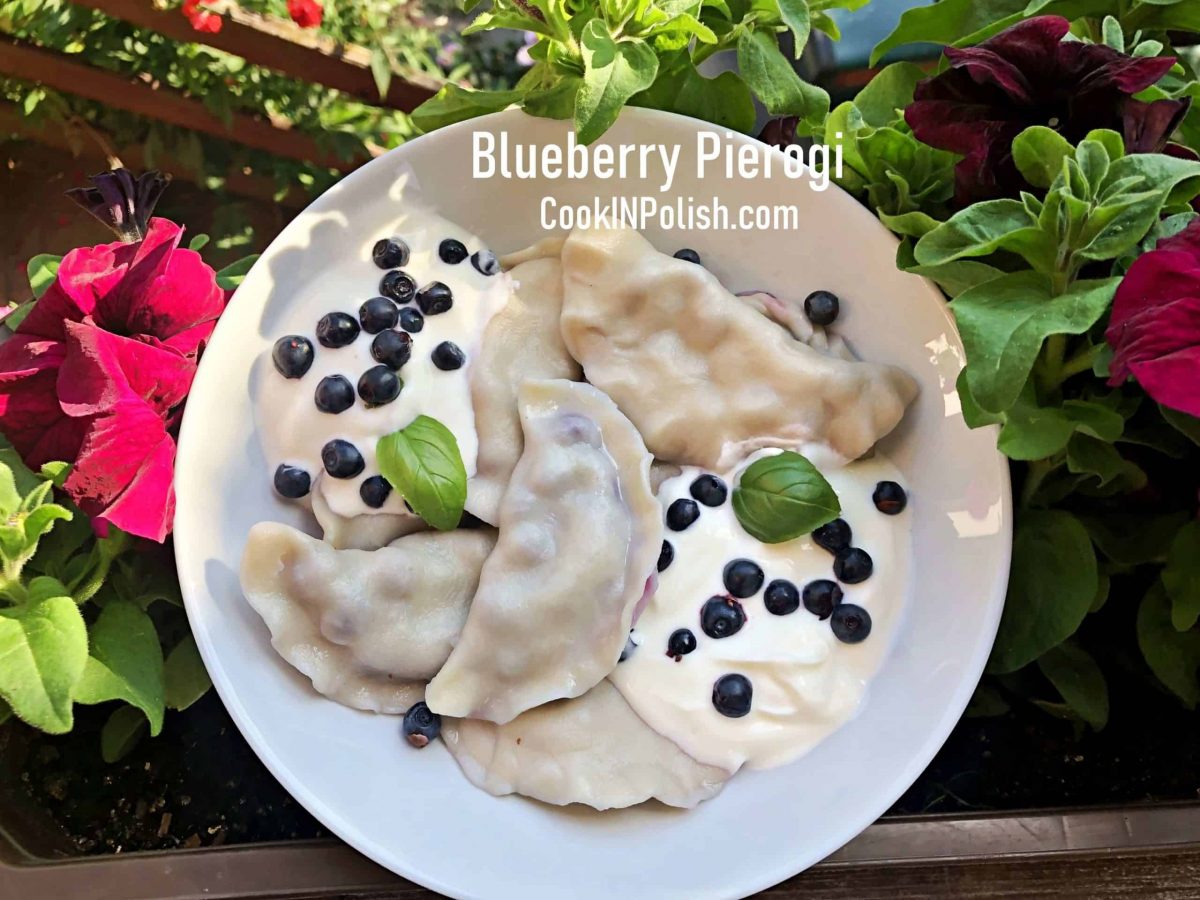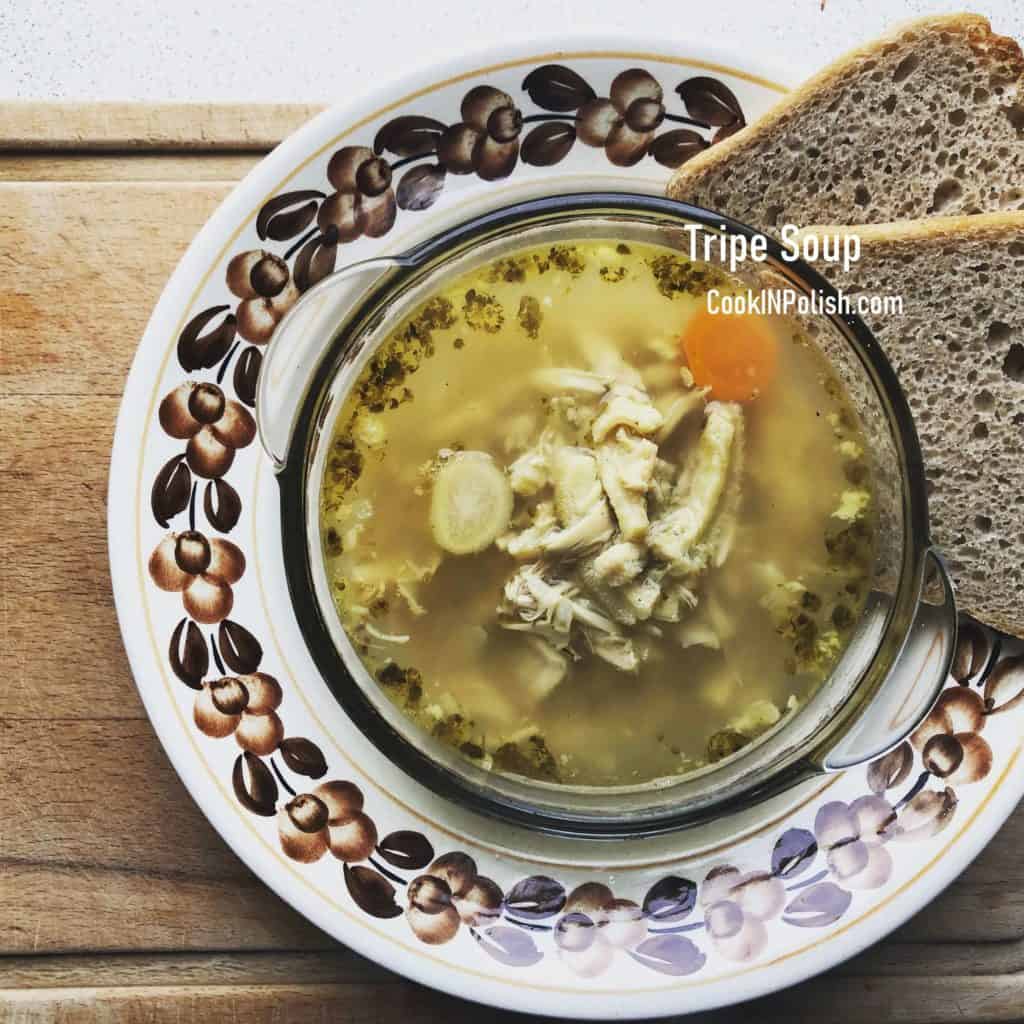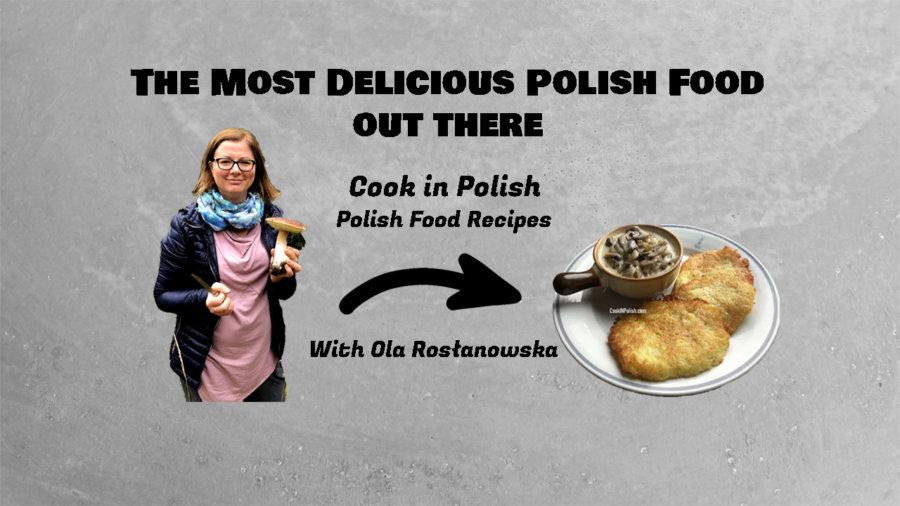In search of some of the most delicious Polish food out there, I recently spoke with Ola Rosłanowska, creator of CookINPolish – Polish Food Recipes, to give an interview for Finding Poland. Let’s check out what this master chef had to say about Polish cuisine:
1. From your grandma’s dishes, to tatty old cookbooks and tasting local Polish cuisine, it seems that a range of sources have influenced your cooking. Are there any other people or sources of inspiration that have contributed to what you cook, and the way you cook?
“ I am a kind of listener. I find inspiration in the people I meet. I often inquire with neighbours, friends, and colleagues about their family traditions and holiday customs, delving deep into the subject. It’s fascinating for me to explore. Every region, and even every family, has its own unique recipes and customs. What makes these conversations so special is the respect that everyone holds for their culinary traditions. It inspires me to discover new flavours and stories that lie behind each dish.
I often engage in conversations with my family, where we reminisce and transport ourselves back in time, recalling the most delicious Polish food that Grandma Emilka used to prepare. These cherished moments of nostalgia not only bring us closer as a family but also inspire me to recreate and reimagine those classic recipes in my own kitchen. The connection between food and memories is truly special and it’s something I hold dear in my culinary journey.”
2. In recent years, my wife and I have picked an abundance of wild fruits, plants and flowers in Gdańsk. These include rosehip, cherries, wild berries, arugula and apples. We even picked the white flowers from elderberry bushes to make elderberry fruit cordial. How do you exploit what nature has given you in your area?
“I am observing that more and more people are foraging for wild fruits in cities, and I’ve noticed this trend in Warsaw. There are many spots, especially on the outskirts of the city, with old fruit trees. These spots include old plots, parks, meadows, and fields. It’s just important to be cautious that these trees and bushes don’t grow too close to roads. I know that there’s even a worldwide map of fruit trees which is built by and for foragers.
I think it’s a fantastic idea to plant fruit trees alongside ornamental ones in parks and neighbourhoods, for the benefit of local residents.
As for my own experiences in this matter, I make tincture from walnuts from my neighbourhood, gather mirabelle plums and sour cherries from old abandoned plots (also for liqueurs!), and collect pears and apples for vinegar. I also gather herbs: there are lots of goosefoot, nettles and sorrel to collect and make soups. What’s more, I gather dandelions and make syrup. Here, it’s important to ensure that these aren’t places where people walk their dogs.
My other love is foraging for mushrooms. Wandering through Polish forests is a source of relaxation for me, and every mushroom I find brings me joy. I also love preparing dishes with wild mushrooms: sauces, soups, drying them, and pickling them in vinegar.
I invite you to browse my recipes containing wild plants.”
3. When it comes to pierogi, I personally love the baked variety, although I’ve only eaten them at Pierogarnia Mandu in Gdańsk and haven’t actually made pierogi myself. Can you reveal all about your lifelong association with pierogi and what your favourite fillings are?
“ I cook a lot of traditional Polish food, especially simple budget dishes, just like pierogi. They are quite time consuming to make, but they are actually a combination of simple dough (basically flour and water) and a variety of pierogi fillings. So I encourage you to try to make them!
My favourite pierogi are forest mushroom and sauerkraut, meat pierogi and seasonal pierogi with Polish bilberries. These are actually some of the flavours of my childhood. I had a wonderful grandma who used to cook amazing yeast pierogi with cabbage and mushrooms. They were pan fried, which is not a very popular way to make pierogi – most often pierogi are boiled. My grandma made these fried pierogi only for Christmas Eve. Those were special moments for us. My sister, Kasia, and I continue to make our grandmother’s yeast pierogi for Wigilia in memory of babcia Emilka.”

4. What are the most delicious Polish dishes you’ve ever tried?
“ I am not a picky eater:) I love Polish soups, and I believe soups are something that Poles really know how to make. My top three are Beet Soup, Sorrel Soup and Żurek.
The most delicious Polish food for me revolves around Polish comfort foods – namely Potato Pancakes, Gołąbki and Polish Vegetable Salad. These are the flavours of my childhood that make me feel better each time I have them. During travels across Poland, I discovered a lot of new really tasty Polish dishes. I developed a love for Silesian cuisine: Beef Roulade, Modro Kapusta [red cabbage], Silesian Kluski [potato dumplings] are other Silesian staples – all so tasty! The best Polish cakes for me are Makowiec [a strudel-like, yeast poppy seed cake], Szarlotka [Apple Pie] and Karpatka [a cream pie filled with vanilla milk pudding or custard].”
5. Are there any traditional Polish dishes or foods which you really can’t stand?
“ There are Czernina [a soup made with the addition of duck blood] and Pork Cynaderki [pork kidney stew]. I have them on my list of the dishes to prepare and share on the blog, but they’re really stuck there. Once I make all the rest of the Polish food, I will make them as well. In fact, they would be the last two dishes on my blog.”
6. Are you a stickler for preparing the 12 dishes traditionally associated with the Polish Christmas Eve supper (Wigilia)?
“ A large family gathers at our house for the holidays and each person prepares something so there really are a lot of dishes. Thanks to this, we are not overloaded with work and manage just fine. We often hear about the issue that a lot of food is thrown away after the holidays. In my opinion, it’s better to make less food than to eat too much and then throw it away. If there is a small family at the table, it is better to prepare fewer dishes and enjoy the holidays and each other’s company.
The old generation of Poles makes sure that the table is richly set, focusing too much on hospitality. This is their way of showing their love and caring for their family, often remembering that they were poor in the past. Hospitality is a wonderful national characteristic associated with Polish people, but on the other hand we have to think about health – so as not to overeat and not to overwork ourselves. In my view, we should enjoy the atmosphere of the holidays and spending time with family.”
7. I have read on your site that you love travelling across Poland and tasting local cuisine. Can you recollect some of the best dishes you’ve come across?
“ Regional Polish food is a genuine Polish treasure. I greatly enjoy travelling across Poland and trying to find places with the best local dishes. My last trip was to Podlasie, a beautiful region in the north-eastern part of Poland which is full of small, picturesque villages, clean rivers, wild forests and blooming fields. I loved Kartacze [potato dumplings] and Potato Babka, which are Podlasie specialties. We would often have two dinners per day, just to try all the dishes we wanted to. I could recommend Zaguby – special regional pierogi in the restaurant U Ireny in the town of Drohiczyn and delicious Potato Babka in Bar Jarzębinka in the town of Supraśl.
Every summer we go to the Polish seaside for holidays where we eat lots of fried fish, herring in cream and fish soup. We have a favourite restaurant – Złota Rybka in Lubiatowo – where we spend a lot of time.
I also love Silesian cuisine, as I mentioned before, and Polish highland cuisine, especially Oscypek cheese with cranberry preserve and Kwaśnica Soup.”
8. Finally, have you spoken with many foreigners about Polish cuisine? How do they find Polish food?
“ Most foreigners I talk to tend to say that the most delicious Polish food out there is Pierogi and Gołąbki. Polish sausage and vodka are also very popular, especially with dill pickled cucumbers – ogórek kiszony. The latter is sometimes controversial – people seem to be afraid to try it, just like Polish Cucumber Soup.
Poles love pickled herring and prepare it in thousands of ways. Few people of non-Polish origin are used to this.
Another strange Polish dish is Flaczki – a traditional Polish tripe stew – a favourite of many Poles.
Many readers of my blog are often surprised that I cook dinner for my family every day. It seems that many people from abroad buy ready-made food from restaurants instead of cooking from scratch themselves. In fact, I often cook a larger portion so we can have it on two different days. For example, chicken soup from Sunday makes a great tomato soup on Monday. Either way, I think we need to cherish the Polish custom of home cooking and not give up on it. Home-made food is part of Polish tradition, heritage and culture. It’s also much cheaper and you know what you’re eating. Cooking together brings people closer and strengthens family bonds.”


